Tall Storeys: a new exhibition at the RIBA in London charts Hong Kong’s architectural history
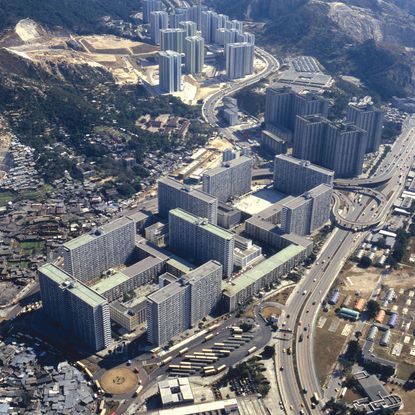
In Hong Kong, change is the only constant. Unprecedented economic and demographic growth in the face of land scarcity has forced the high-density development that helped create the city's distinct cityscape. Charting this story through architecture is the Hong Kong Institute of Architects’ (HKIA) new exhibition, 'Tall Storeys: Evolution in Hong Kong Architecture 1965-2014', now open at the RIBA in London.
The travelling show celebrates the 50th anniversary of the HKIA's annual awards, inaugurated in 1965 to promote outstanding achievements by its members. In this show, the Institute has selected and is presenting 30 winning projects from its archives. 'Mastery of the multi-storey and mixed-use model has made our architectural expertise a valuable reference for high-density challenges around the world,' says HKIA vice president Tony Tang. Indeed, the exhibition displays some creative urban solutions.
The engaging chronological layout - of architectural photography, enriched by videos - places buildings within a broader socio-economic context. It begins in the 1960s with the seminal Choi Hung Estate, designed at the close of the Chinese Civil War to cope with increasing migration. The colourful estate – choi hung means ‘rainbow’ in Cantonese – reflects the sense of optimism that pervades the projects on show; and the estate itself still provides social housing today. Highlights include the Hong Kong Arts Centre, by Taoho Design, and the recent Columbarium by the HKSAR government.
The exhibition casts a strong focus on the 21st century and especially Hong Kong's flourishing relationship with international architects. A planned town based around an MTR transit station in West Kowloon is one of many new developments taking shape. The scheme is currently in progress, with Herzog & de Meuron’s M+ museum scheduled for completion there in 2017.
The exhibition launched recently with a forum on high density cities and a lecture on reconnecting cultures with international speakers Rocco Yim of Hong Kong's Rocco Design Architects and Toby Denham of TFP Farrells. After its stint at the RIBA, it will travel to Hong Kong, Taiwan and New York.
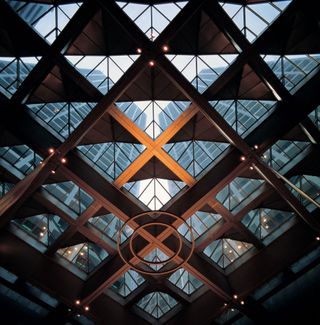
The Landmark building in the city's Central district gave P&T Architects and Engineers their second Silver Medal in 1982.

P&T Architects and Engineers scooped their third Silver medal in 1985 for Exchange Square, also in Central.
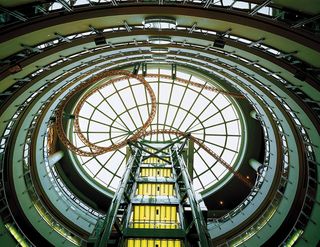
Dragon Centre by Wong Tung & Partners nabbed a Certificate of Merit in 1994. The nine-storey shopping centre features a natural ice skating rink, as well as Asia's first indoor roller coaster.
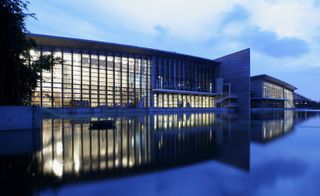
The Hong Kong Wetland Park by HKSAR Government's Architectural Services Department was awarded the Medal of the Year in 2005. The awards were diversified in 2000, and this winning project marks the growing public concern for sustainability.

The Vanke Chengdu Commercial Complex by CL3 Architects won the Award for Members' Work outside of Hong Kong in 2005. The Award, offered from the year 2000, recognises Hong Kong's increasing presence as a world city.

Sunny Bay Station by Aedas Limited, which scooped a Merit Award in 2005.
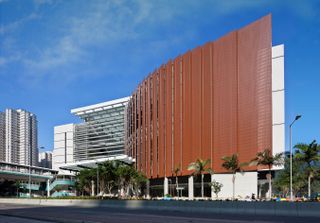
The Architectural Services Department of the HKSAR government designed the Siu Sai Wan Complex in collaboration with Ronald Lu & Partners. The Complex won a Merit Award of Hong Kong in 2010 under the category 'Community Building'.

Hong Kong introduced its small house policy to try and encourage people to move back to their ancestral villages by providing locals that meet the criteria with a grant to build one small house. The Vice Versa Houses by Global Atelier is one example, winning the President Prize in 2012.
ADDRESS
RIBA
66 Portland Place
London W1B 1AD
Wallpaper* Newsletter
Receive our daily digest of inspiration, escapism and design stories from around the world direct to your inbox
-
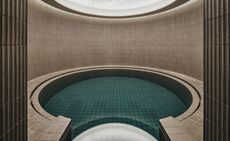 Find yourself at Six Senses Kyoto, the brand's breathtaking Japan debut
Find yourself at Six Senses Kyoto, the brand's breathtaking Japan debutSix Senses Kyoto opens its doors boasting tranquil, luxurious interiors by Blink Design Group
By Danielle Demetriou Published
-
 Shigeru Ban’s mini Paper Log House welcomed at The Glass House
Shigeru Ban’s mini Paper Log House welcomed at The Glass House'Shigeru Ban: The Paper Log House' is shown at The Glass House in New Canaan, USA as the house museum of American architect Philip Johnson plays host to the Japanese architect’s model temporary home concept
By Adrian Madlener Published
-
 Artist Mickalene Thomas wrestles with notions of Black beauty, female empowerment and love
Artist Mickalene Thomas wrestles with notions of Black beauty, female empowerment and love'Mickalene Thomas: All About Love’, a touring exhibition, considers Black female representation
By Hannah Silver Published
-
 Beijing City Library is an otherworldly escape from the digital world
Beijing City Library is an otherworldly escape from the digital worldBeijing City Library by Snøhetta is a flowing, welcoming space to share knowledge and socialise
By Tianna Williams Published
-
 Chinese scholar Zhang Taiyan’s house opens as a museum and bookshop in Suzhou
Chinese scholar Zhang Taiyan’s house opens as a museum and bookshop in Suzhou20th-century Chinese scholar Zhang Taiyan’s house in Suzhou has opened to the public as a museum, featuring a bookshop designed by Tsing-Tien Making
By Ellie Stathaki Published
-
 Jiaxing’s sunken train station is a hub of urban greenspace and efficient city links
Jiaxing’s sunken train station is a hub of urban greenspace and efficient city linksJiaxing Train Station by MAD Architects is a bubble of urban green space with a blend of reconstructed historical design and modern minimalism
By Tianna Williams Published
-
 Junya Ishigami’s Zaishui Art Museum in China was conceived as a ‘gentle giant’
Junya Ishigami’s Zaishui Art Museum in China was conceived as a ‘gentle giant’Japanese architect Junya Ishigami completes Zaishui Art Museum, a kilometre-long building positioned in a manmade lake and aiming to ‘bring the outside landscape in’
By Joanna Kawecki Published
-
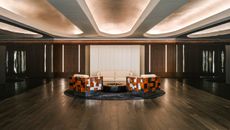 A Hong Kong HQ by Brewin Design Office draws on its modernist building’s nature
A Hong Kong HQ by Brewin Design Office draws on its modernist building’s natureA modernist-inspired office interior in Hong Kong by Brewin Design Office draws on its building’s 1980s Harry Siedler architecture
By Daven Wu Published
-
 Sun Tower, rising on Yantai’s waterfront, wins Best Building Site in the Wallpaper* Design Awards 2024
Sun Tower, rising on Yantai’s waterfront, wins Best Building Site in the Wallpaper* Design Awards 2024We take a tour of the building site at Sun Tower, Open Architecture's new nature-inspired cultural attraction for the seaside town of Yantai in China
By Ellie Stathaki Published
-
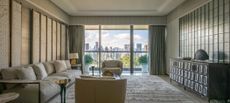 La Maison Blanche is a Hong Kong apartment elevated through bespoke luxury interiors
La Maison Blanche is a Hong Kong apartment elevated through bespoke luxury interiorsLa Maison Blanche by Cream is a Hong Kong apartment with an emphasis on period-inspired, layered decor and long city views
By Ellie Stathaki Published
-
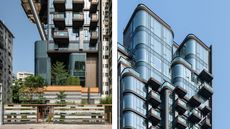 Garden Crescent brings biophilic design to a dense Hong Kong neighbourhood
Garden Crescent brings biophilic design to a dense Hong Kong neighbourhoodGarden Crescent by Ronald Lu & Partners brings a haven of green in its high-density Hong Kong neighbourhood
By Ellie Stathaki Published